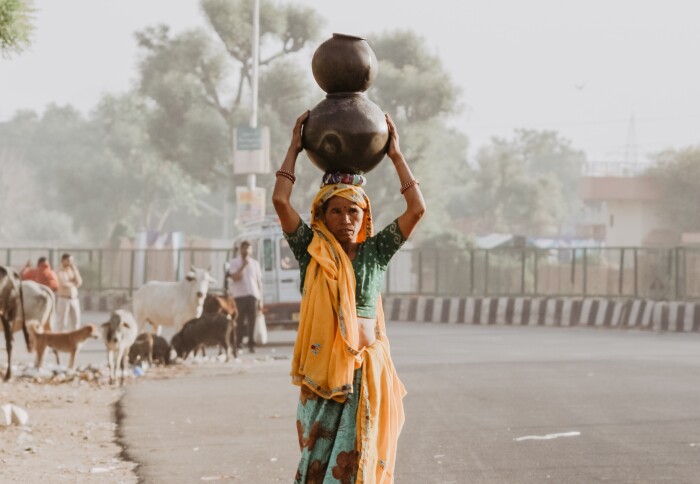Human-caused climate change superheats south Asia heatwave

A study has found that climate change played a major role in the heatwave that impacted Bangladesh, India, Thailand and Laos in mid-April.
Publishing their results today, the international World Weather Attribution (WWA) team of climate scientists led by Dr Fredi Otto from the Grantham Institute – Climate Change and the Environment found that climate change made the deadly heatwave event at least 30 times more likely.
While April is typically a hot month in south and southeast Asia, this heatwave was exceptional.
On 15 April, Thailand recorded its hottest day ever – a blistering 45.4°C in the northern province of Tak.
On 18 April, temperatures rose above 44°C in several northern and eastern cities in India.
And on 19 April, Laos also recorded its hottest day ever – 42.9°C in the northwest Sainyabuli province.
Across the region, the extreme heat closed schools, melted roads, sparked wildfires and affected people through heatstroke related hospitalisations and casualties.
While 13 heat related deaths were reported in Navi Mumbai on 16 April alone, the total number of the mid-April heatwave deaths is currently unknown.

Uncovering the influence of climate change
The study looked at the average maximum temperature and maximum ‘heat index’ for four consecutive days (17-20 April) across two regions, one covering south and east India and Bangladesh, and a second one including all of Thailand and Laos.
Today’s study is the first time WWA researchers have analysed heat index, which combines temperature and humidity, and reflects how temperature feels to the human body.
The analysis found that in Bangladesh and India, before human-caused climate change, similarly extreme heatwaves used to occur less than once a century on average. In today’s climate, they are now expected around once in five years.
The earth’s average temperature has increased by about 1.2°C since the Industrial Revolution. If emissions are not cut rapidly, warming could increase to 2°C over the next 30 years, according to the Intergovernmental Panel on Climate Change.
With 2°C of warming, similar heatwaves will occur at least once every two years in Bangladesh and India on average.
In Laos and Thailand, the researchers found that a similar heatwave would have been nearly impossible in a world without human-caused climate change.
In today’s climate, the heatwave is still a very rare event that can only be expected around once every 200 years. But if global warming increases to 2°C, similar heatwaves will become much more common, occurring about once in 20 years.
Dr Friederike Otto, Senior Lecturer in Climate Science at the Grantham Institute and a founder of World Weather Attribution, says the study is yet another piece of evidence that demonstrates how climate change is worsening heatwaves around the world.
“We see again and again that climate change dramatically increases the frequency and intensity of heatwaves, one of the deadliest weather events there are.”
The study comes just over a week after another WWA study found that the late April heatwave that broke temperature records in Portugal, Spain, Morocco and Algeria was made at least 100 times likely and 3.5°C hotter because of climate change.
Extreme heat and inequality
World Weather Attribution studies shine a spotlight on climate change’s unequal impacts.
“As it often happens, marginalised people are the worst affected. Many of them are still recovering from the pandemic, and from past heatwaves and cyclones, which leaves them trapped in a vicious cycle,” says Emmanuel Raju, Director of Copenhagen Centre for Disaster Research at the University of Copenhagen and one of the authors of the study.

While people in Bangladesh, India, Thailand and Laos are used to living with high temperatures, climate change-intensified heatwaves will most severely impact the poorest people in each of the four countries.
These people include outdoor workers and people living in slums with reduced access to cooling green spaces, water and air conditioning and clean water.
Dr Otto says every heatwave related death is avoidable and governments can take simple steps to protect people from heatwaves.
“Heat action plans are only being introduced very slowly across the globe. They need to be an absolute priority adaptation action everywhere, but in particular in places where high humidity enhances the impacts of heatwaves.”
Article supporters
Article text (excluding photos or graphics) © Imperial College London.
Photos and graphics subject to third party copyright used with permission or © Imperial College London.
Reporter
Sam Ezra Fraser-Baxter
The Grantham Institute for Climate Change